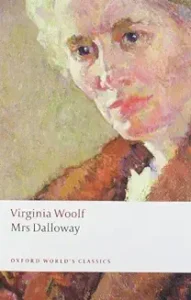Mrs. Dalloway by Virginia Woolf 1925
Virginia Woolf’s 1925 novel begins with one of the best known lines in English fiction: “Mrs. Dalloway said she would buy the flowers herself” and then spends the next several hundred pages in various people’s minds. Woolf was one of Modernisms originals and brought the ‘stream of consciousness’ novel into popular usage. And what a set of streams it is!
Clarissa Dalloway is the 51 year old wife of Richard, a politician who is generally felt to be a failure because he was never ‘in the Cabinet’ and the mother of Elizabeth, who at 17 is just beginning to emerge from childhood. Peter Walsh, Clarissa’s first love who, spurned by her, has spent his life in India and Sally Seton, now Lady Rossiter, were all dear friends in their youth spending weekends at Brauton where Sally and Clarissa shared a stolen kiss. Woolf also develops several parallel stories and characters, so we spend time with Septimus Warren Smith who commits suicide in the midst of a shell-shock psychosis, the only apperance of WWI in the novel. We also meet Elizabeth’s history tutor, Doris Kilman a poor, bitter, downtrodden woman as well as various lords and ladies including Sir William Bradshaw a psychiatrist and Dr. Holmes, a GP, who failed to help Septimus.
It’s really quite the whirlwind of mental exercises, and it’s easy to get lost among the thoughts and speculations of all of these characters, but Woolf skillfully manages to throw a bright light onto the key theme—aging, memory, the life story we tell each other, the inability to know others and perhaps to know ourselves. The distinction between the external appearance as exemplified in Clarissa’s party and the endless internal explorations of who we are is vividly made, though embedded in lots of trivial observations and thoughts.
All in all, this was a good read with a number of London-based connections. Lady Bruton, a leading figure who relied on Richard Dalloway and Hugh Whitbread to write a letter to the Times about emigration, appeared while we were in Bruton, Somerset itself.
Bottom line is that Woolf was a brilliant, creative, and innovative writer who like Septimus in this novel, took her own life. She’s worth reading though my favorite of her novels remains ‘To the Lighthouse’.



